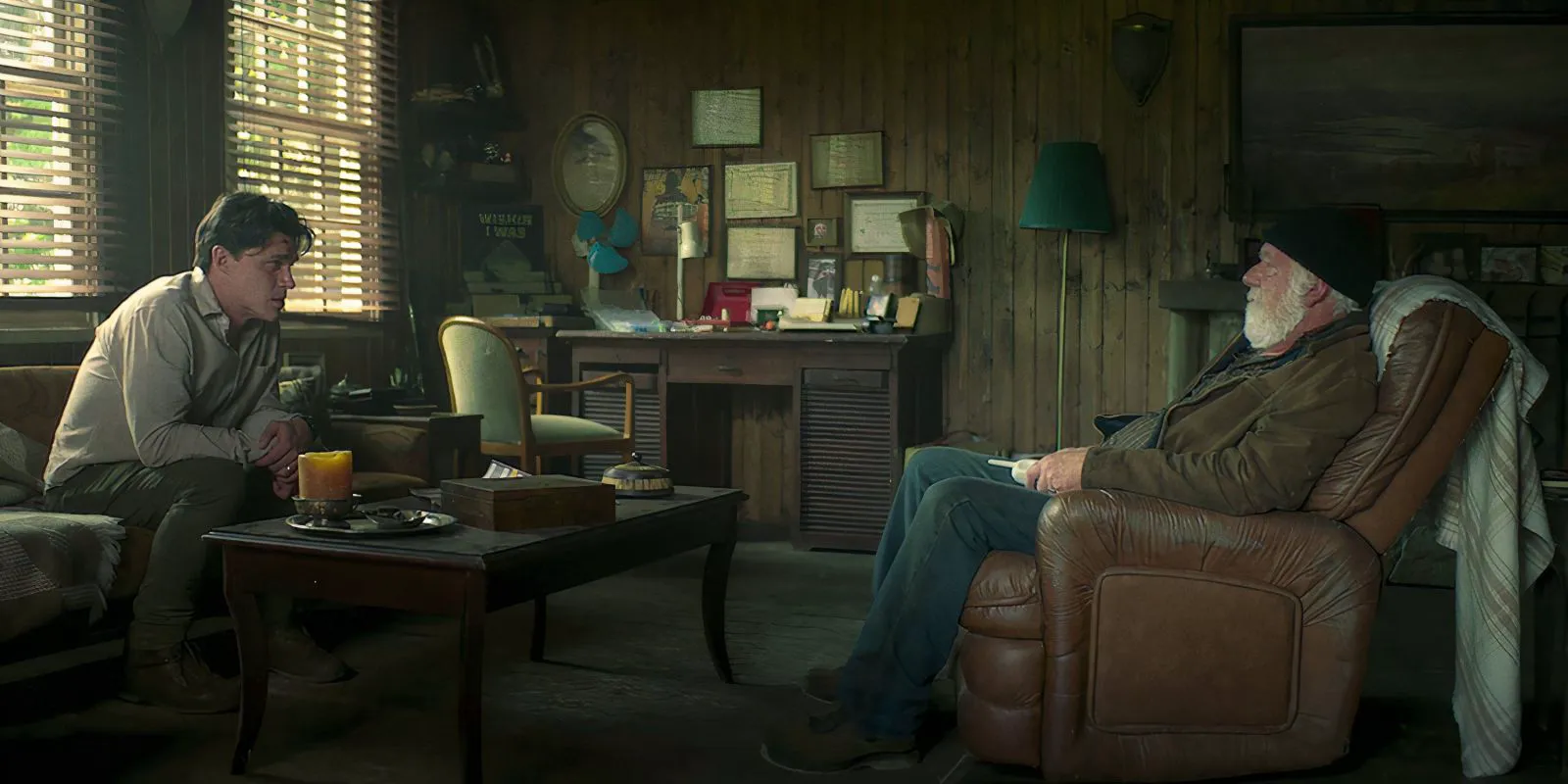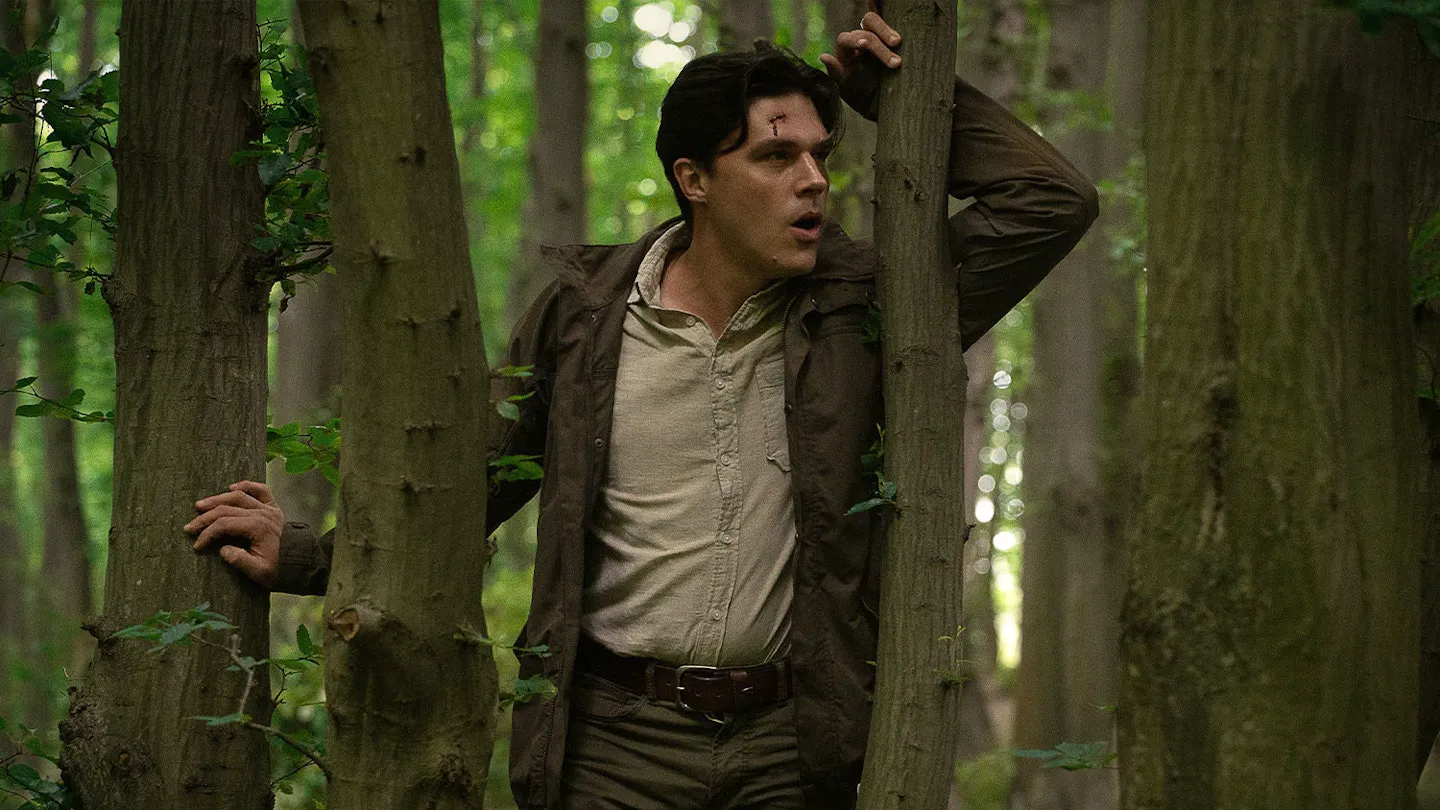Iris (Kelsey Asbille), her gaze vacant, stares at the ceiling. She slowly rises from her bed, dons a tracksuit, and, leaving her phone in the hallway, steps outside. The path ahead is long, but Iris carries only a toy red boat and a pocket knife. A car speeds along the pre-dawn highway, drawing her closer to a fateful moment—a point of no return, after which Iris will leave this world forever. The hiking trail leads to the ill-fated summit where her son, young Mateo, recently died in a tragic accident, a misstep into the void. Her thoughts of suicide are interrupted by the arrival of Richard (Finn Wittrock), who feigns cheerfulness as he admires the view. One word leads to another, and Iris reconsiders her decision to jump. Together, they descend back to their cars, Richard producing an umbrella despite the clear weather. Doubt flickers in Iris’s eyes, followed by fear. Moments later, she collapses, unconscious from a taser shock.

Kelsey Asbille as Iris in a still from “Shut In”
Directors Brian Netto (“Delivery”) and Adam Schindler (“Intruders”), working from a script by T.J. Cimfel and David White (“There’s Something Wrong with the Children”), and with the support of producer Sam Raimi (whose name adorns posters worldwide), have created a contained survival thriller reminiscent of the “Saw” franchise. The central idea is simple: to understand life, one must face death. However, this is merely Iris’s perspective as she transforms from a young mother, who has lost her purpose after the death of her child, into a warrior willing to do anything to survive. Richard, on the other hand, operates more along the lines of “Tell No One”—inflicting pain because he can, because his victim allows it. Iris is the perfect candidate, delivered right into his hands. All that remains is to add the final touches to an already promising scenario: inject a paralytic agent that will completely immobilize her within 20 minutes, eliminating her last chance of escape. But before the drug takes effect, Iris manages to flee, desperately seeking refuge in the woods. Tick-tock, tick-tock, in five minutes her fingers will begin to numb, and in fifteen, her legs will fail. Where will Iris be when her body no longer obeys her commands?
A Race Against Time and Paralysis

Finn Wittrock as Richard in a still from “Shut In”
The protagonist’s loss of control over her body limits the narrative’s dynamism, but fortunately, the world around Iris does not freeze; it tosses her from one point to another, like a volleyball. She tumbles down a hill, hides in the roots of a tree, lies silently behind a sofa, plummets into the water like a stone, watches the clouds while lying in a boat. You never know what will kill you or what will bring liberation. Sometimes, a life-saving moment comes in the form of a random call from the maniac’s wife, who spontaneously decides to visit the cabin where he usually disposes of bodies, and sometimes it’s the river current, which can deftly pick up an immobilized body and carry it to a safer place.

Finn Wittrock as Richard in a still from “Shut In”
Tense Encounters and Missed Opportunities
“Shut In” features an excellent scene where the main characters find themselves in a confined space with Bill (Moraé Treadwell)—a stranger who finds the immobilized Iris in the woods early in her ordeal. Initially, Bill decides to help her and hides her, but the arrival of Richard, skillfully portraying a husband grieving the loss of his wife, makes the old man doubt the correctness of his chosen side. The situation, in which each of the characters feels uneasy and frantically weighs the options most beneficial to them personally, creates a good tension that suggests the film will continue to realize this potential. Unfortunately, the writers shy away from close interaction with secondary characters, preferring to have Iris and Richard perform more of a duet.
Predictability Undermines the Thrill
The main flaw of “Shut In” is its predictability. It is not difficult to guess the ending of the story and the conclusion the protagonist will reach. Since, unlike the recent “Significant Other”, the plot does not offer an unexpected finale that would turn a simple thriller into something special, we are left to hope for an impressive spectacle—we know how the film will end, but we can still try to enjoy the process.